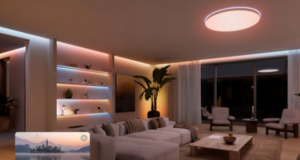
An important part of building a bathroom is to ensure that floors and walls are properly waterproofed, to prevent rot and mould.

Why is waterproofing important?
Waterproofing regulations apply to the sub floor and some areas of the floor itself. The importance of effective moisture prevention cannot be underestimated; water damage can cause severe long term damage to the structure of your house and make it unsound. This can be very costly to repair – if it’s repairable at all – and can cause accidents if not treated in time.
Waterproofing for subfloors
As a rule, your builder should be well aware of the waterproofing requirements for subfloors, and the correct waterproofing should be installed as standard part of the subfloor construction. The Building Code of Australia (BCA) Volume 2 provides minimum requirements for slab on the ground construction. It covers what types of materials can be used for a Damp-proof course (DPC) and the membrane, and also details the necessary height of the DPC above the ground or the adjacent paving. These regulations are in place to prevent water from rising from underneath your house, seeping up through the concrete and weakening the foundations. For those with stumps, new stumps should be properly waterproofed to prevent corrosion and stump failure.
Waterproofing for bathroom floors
Because they’re likely to see more water than any other area inside your house, it’s particularly important that bathroom floors are properly waterproofed. There are regulations that your waterproofing will need to comply with, as set out by the Building Code of Australia and Australian Standards (AS 3740-1994). In short, the following rules myst be followed:
- In the shower, the whole floor must be waterproof, and the shower walls should be waterproofed up to 1800mm.
- The walls need to be waterproofed up to 150mm.
- If the bathroom floor is made of or contains wood or if the bathroom is on the second storey or higher, the whole floor must be waterproofed.
- Over the step down to the floor should be waterproofed to 100mm.
Unless you’re completely qualified, this is a job that’s always best left to a specialist waterproofer. If your bathroom floor isn’t properly waterproofed, the resulting damage may not be immediate, but can be absolutely disastrous – we’ve all heard the horror story about the upper floor bathtub crashing down into the floor below!
Waterproofing for other areas
Other wet areas need be waterproofed too, such as the laundry, kitchen or any other room with active plumbing. This may include waterproofed sink areas and splashbacks, and using water-resistant subfloor materials like cement sheeting rather than conventional particleboard for certain areas. It’s also important to choose floor coverings that won’t be damaged by exposure to water in these areas too. Carpet is a poor choice in a laundry area!
Remember that most of the harm to a floor may be unseen before it is too late. Burst pipes and taps can cause a lot of water to gush out quickly, but it’s the small, constant, unseen leaks which will rot the floor and do the most damage.




